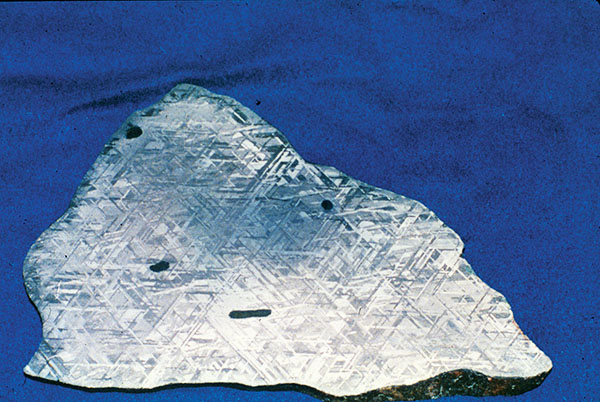Researchers Chi Ma of Caltech and Alan Rubin of the University of California at Los Angeles reported in the journal American Mineralogist (September 2019) the discovery in a meteorite of the first natural occurrence of the iron-carbide mineral Fe5C2. A carbide is a binary compound of carbon, with an element less electronegative than carbon, excluding hydrogen. The new mineral, called edscottite, is named after Edward R.D. Scott of the University of Hawai‘i at Manoa, in honor of his studies of iron meteorites. Synthetic Fe5C2, called Hägg carbide, had been previously produced in the laboratory and in trace amounts in tempered steel. See also: Electronegativity; Iron; Meteorite; Mineral; Steel; Tempering

The elemental composition of edscottite was determined by electron-probe microanalysis during the reanalysis of a sample obtained from a slice of the Wedderburn iron meteorite found in 1951 in Wedderburn, Australia, that had been sitting for years at Caltech. However, despite scientists’ understanding of the composition of edscottite, the mechanism by which it forms remains unknown. Coincidentally, or not, both meteorite researchers Ma and Rubin have minerals named after them called machiite (Al2Ti3O9) and rubinite (Ca3Ti3+2Si3O12), respectively. See also: Cosmochemistry; Electron-probe microanalysis





